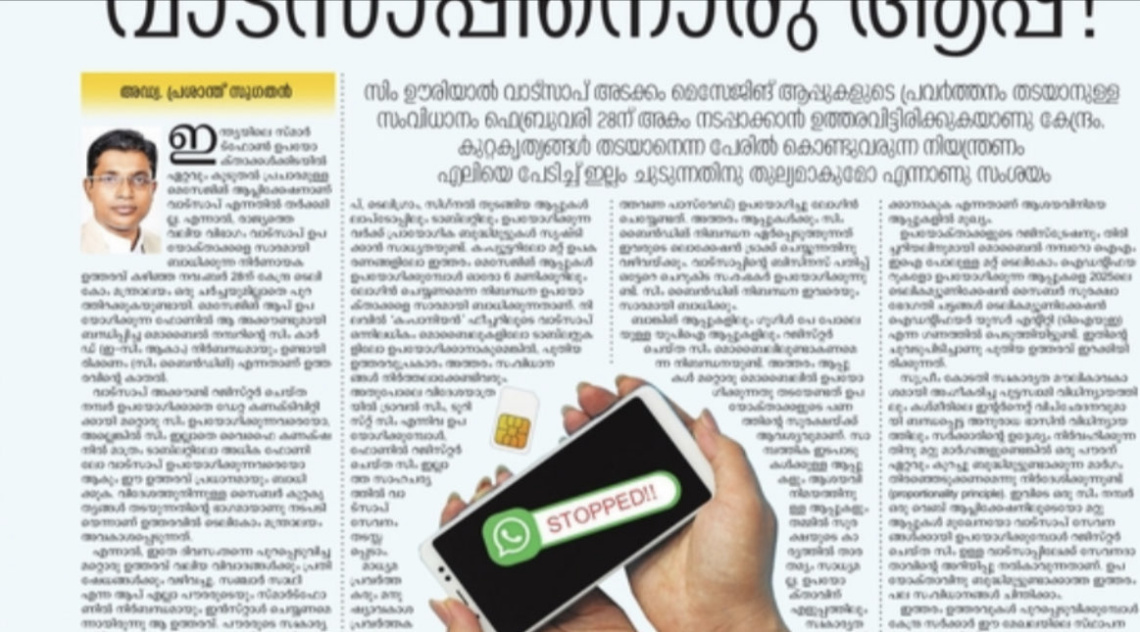The hearing on Day 1 began with the Attorney General requesting the court to allocate time to both sides for arguments. Shyam Divan, Senior Advocate and counsel for petitioners, responded by saying that considering the complexity of the issue, he would be able to provide an estimate only by the next week.
Mr. Divan, then, handed out his opening statement and commenced his arguments. He said that the petitions challenged the Aadhaar scheme and the project, the 2016 statute, notifications, regulations, circulars, etc. He stated that the Aadhaar project, which was under challenge, needed to be understood. He said that project was in existence for a period of seven years from 28th January 2009 to 12th July 2016, followed by an enactment which sought to ratify and give a statutory backing to the entire project. However, the primary issue that arose was whether the project was constitutional at all. The second issue was that the statute itself was under challenge on several grounds including violation of Part III of the Constitution. He said that the Aadhaar project was continuing in nature and covered only some parts of the project.
He mentioned that the present case was unique as it involved challenges to an unprecedented programme, i.e., Aadhaar. He stated that the few foreign cases that come close to Aadhaar programme were all decided in favour of the citizens. He contended that if the Aadhaar Act was allowed to operate unimpeded, it would hollow out the the Constitution, especially the rights and liberties assured by it to the citizens.
Mr. Divan proceeded to enlist some of the key issues arising in matter and the reliefs sought. With respect to the physical autonomy of a person over her own body, he said that the concept of eminent domain does not extend to body. He further asked for an ‘option’ to be provided to the individuals enrolled with Aadhaar to ‘opt out’ of the programme and have their data deleted.
He further listed out the important dates leading to the hearing, including the important orders of the Supreme Court issued in the case so far. He stated that from January 2009 to December 2016 till the enactment of the statute, the Aadhaar programme functioned under an administrative notification which had no mention of biometrics at all.
He referred to the orders of the Apex Court passed on 11th August, 2015 and 15th October, 2015 which specifically stated that Aadhaar could not be used for any purpose other than the six schemes mentioned in the orders and that no one would be denied benefits for want of Aadhaar till the matter is finally decided by the court. He emphasised that these orders have neither been diluted nor varied at any subsequent stage.
He highlighted that since then Aadhaar has been made mandatory for several schemes and services including the re-verification of cellphones, opening and maintaining bank accounts, eKYC, holding investments in mutual funds and insurance policies, effectively making it compulsory. He stated that the scheme was meant to be voluntary. However, by mandating Aadhaar for all purposes, it also becomes a case of false declaration.
He then moved on to highlight how Aadhaar was operating as an instrument of exclusion. He detailed the profiles of the petitioners who have been working in the field. He stated that people have been facing several difficulties due to the problems in enrolment. The people living in remote areas of the country were unable to come to the enrolment centres. Moreover, he said, the people involved in manual labour were unable to get their biometrics registered. He further said that biometrics are unreliable in case of elderly people as it keeps changing. He stated that Aadhaar was a programme to stigmatize and exclude people.
Focusing on the duplication issue, Mr. Divan stated that during the beginning of the programme, only a small number of people, to the tune of 1000 or so, were estimated to be excluded due to duplication rejects at the time of authentication. However, as on 17th January, biometrics rejection amounted to 6.23 crores which was more than the population of several states.
He then proceeded to explain different systems for verification of identity- deterministic system and probabilistic system. Elaborating on the former, he said that, the system was deterministic as it relied upon exact matches, like CVV number or an OTP, to be sure of identity. Aadhaar, however, is not based on this system and makes use of probabilistic system.
Describing the probabilistic system, he said that UIDAI captured the fingerprints, photograph and iris and stored them. However, they do not compare fingerprints to fingerprints but make use of a template instead. This template scales the fingerprint and picks up a number of distinctive points or minutae. The authority then sets a value as to how many such of those points should match. Thus, he stated that UIDAI makes a value judgment since if it sets the value too high, there would be no match, and similarly, it cannot set the value too low. He argued that if an individual is entitled to certain rights and benefits, then the process to get them cannot be made dependent on probabilities but should be deterministic.
Mr. Divan delved into the organisational structure of UIDAI and highlighted that the enrolment agencies were all private entities who sent the captured data to the UIDAI. He pointed out that this entire system operated for seven years without any legal framework. He then went into the composition of UIDAI.
At this point, the Bench intervened saying that it did not appear to be a labour intensive organisation to which Mr. Divan replied that there was almost no government oversight over the data gathered.
He further submitted that there should be some statutory parameters and minimum governance when sensitive data such as biometrics are taken. Questioning the validity of the charter under which Aadhaar was operating, Mr. Divan stated that the biometrics were not even covered under the it. He argued that in such a scenario, collection of biometrics was illegal and hence the whole programme is bad.
The focus of the arguments then shifted on to Aadhaar being a tool for surveillance in real time. He explained the process of authentication and how every authentication transaction leave an electronic trail which enables location when built up over time. He stated that there were different silos of information and Aadhaar allowed for convergence of these information which might help in profiling. He questioned whether such an architecture should be permissible.
The Bench asked Mr. Divan if his apprehensions would be met if the State used the data for the purpose it was collected. Mr. Divan answered that Aadhaar by its design was bad and enabled State domination.
The Bench also questioned about the countervailing State interests, of benefits reaching reaching only the deserving and real people. To this Mr. Divan said that the sources clearly point out that have been no such savings as has been claimed. He countered if Aadhaar was a proportionate measure to plug leakages.
Mr. Divan then drew the attention of the Court to the Standing Committee’s report on the old bill and the concerns expressed by the Committee on several issues including privacy, security, data theft, surveillance and profiling. He pointed out the part wherein the Committee had observed that the United Kingdom revoked its national biometric database due to several faults. He further discussed several problems which were in the old bill, and which continue to persist in the current Act.
The Bench also discussed the issue of money bill and the NIDAI Bill, 2010. Senior Advocates P. Chidambaram and Arvind Datar clarified the position in that regard.
Post this exchange, the hearing concluded for the day. Hearing will resume on 18th January, 2018.


